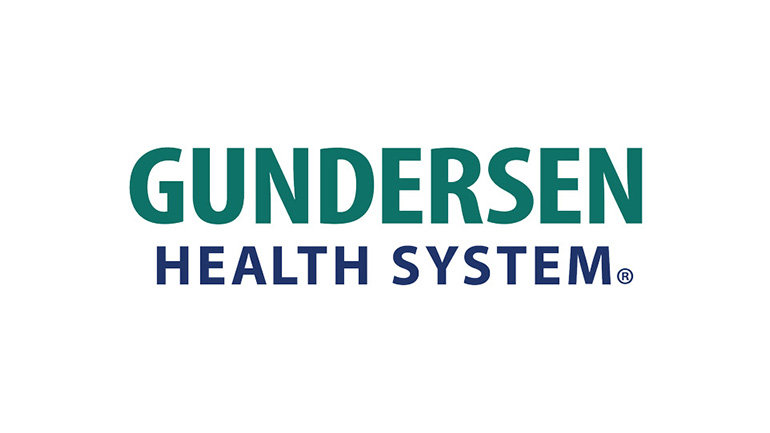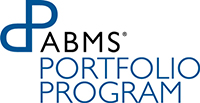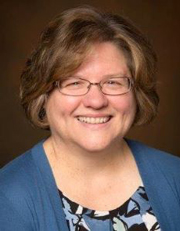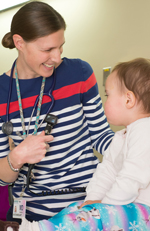
Each year, approximately 42,000 adults and 300 children in the United States die from vaccine-preventable diseases, including measles and influenza. Communities with pockets of unvaccinated and under-vaccinated populations are at increased risk for outbreaks of vaccine-preventable diseases. According to the Office of Disease Prevention and Health Promotion at the U.S. Department of Health and Human Services, each birth cohort vaccinated with the routine immunization schedule saves 33,000 lives and more than $43 billion in direct and indirect health care costs.

“Given these numbers, it seems obvious that immunizing children against preventable diseases should be a foundational part of our nation’s medical care,” said Rajiv M. Naik, MD, Pediatrician, Childhood Vaccine Champion, and Medical Director of Informatics for the Gundersen Health System, which is an ABMS Portfolio Program Sponsor. “However, both simple and complicated barriers exist that can prevent families from vaccinating their children. As clinicians, we need to find ways to address or altogether remove these barriers so that we can offer the very best care to children, their families, and society at large.”
Tackling Vaccination Rates in a Local Community
Viroqua, Wisconsin (population 4,418) is one of the nation’s most under-vaccinated “hotspots” and home to the Gundersen Viroqua Clinic, part of the Gundersen Health System. In August 2019, the clinic’s immunization rate for children 19 to 35 months of age at the Viroqua Clinic was 59 percent, far below the nation’s average of 74 percent.

According to Dr. Naik, there is no shortage of possible reasons for the low vaccination rate in Viroqua. This rural, low-income community has several groups, including migrant workers and the Amish, who are traditionally vaccine hesitant because of fear or misinformation, lack of health insurance, and are less likely to place value on regular wellness visits. Some of the missed opportunities for timely vaccinations include limited access to health care, a lack of standardized immunization protocols/practices, overlooked immunizations at acute care visits, and the absence of reminder/recall systems. Busy health care professionals often lack the time for difficult conversations about vaccine facts versus fiction, so they may not engage with caregivers on this topic. Some providers express concern that they do not have the knowledge to appropriately educate each patient about the benefits of vaccines during a brief appointment.
Recognizing the influential role clinicians can play in encouraging caregivers to vaccinate children, Dr. Naik and his team developed a quality improvement (QI) project for the ABMS Portfolio Program secured from a $120,000 grant sponsored by the American Academy of Pediatrics Chapter Quality Network. Their project sought to improve and standardize the existing vaccination protocols by offering clinicians new tools and education in Viroqua and throughout Gundersen Health System communities. For their active participation, clinicians could earn continuing certification and continuing medical education (CME) credit.

“Thanks to the ABMS Portfolio Program, we were able to include child health clinicians across our 21-county area, potentially impacting more than 45,000 children,” said Rhonda Mullen, Continuing Professional Development Consultant, Continuing Medical Education of the Gundersen Medical Foundation. “The helpful ABMS Portfolio Program staff and their straightforward process took the onus off of our clinicians to submit all of the necessary paperwork to receive their continuing certification credit, freeing them up to continue to provide excellent care to their patients.”
The Project
According to the American Academy of Pediatrics, the single most important factor in getting parents to accept vaccines remains the one-on-one contact with an informed, caring, and concerned clinician. To successfully roll out this ABMS Portfolio Program project to the entire Gundersen system, Dr. Naik went out into the community, presenting two-hour educational sessions to the 28 clinics that see children in their practices. Six modules that address challenges to timely immunizations were recorded and are now online for clinicians to view at their convenience for CME. Titles of the modules include, “Vaccine Hesitancy: Strategies for the Health Provider” and “Quality Improvement and Best Practices for Childhood Immunizations.”
“It was exciting to get out in the field and talk with clinicians about how we can help families get their children vaccinated,” said Dr. Naik. “I find that it is fun and incredibly rewarding to help make things better for both patients and clinicians, not only in our large clinics but also in our smaller regional sites.”

The team knew that providing staff training was not enough to sustain long-term improvement in immunization rates. To build sustainable change, the project team optimized the electronic medical record (EMR) to provide point-of-care decision-making support and help clinicians identify and take advantage of opportunities to openly talk with families about vaccinations.
For example, during an appointment, the clinician can click on the age of the patient and automatically order the correct vaccines and follow-up appointments, access a script to counsel vaccine-hesitant families using proven techniques like the C-A-S-E method, and find information to support vaccine clinical decision-making in real time. If a caregiver is not confident about how to dispel a vaccine myth, the clinician can check the appropriate box, and a fact-filled prompt or a 60–90 second video related to that myth will pop up to support the in-person discussion. With a simple mouse click, the clinician can add a fact sheet about that myth to the after-visit summary that is printed out and given to the patient’s caregiver or shared in the online patient portal. All of this contributes to a smooth, fact-filled appointment that can help caregivers make informed decisions for their children.
The project team developed an online dashboard to capture the immunization data and assist with team-based pay for performance. By having that data and team targets visible to the care teams, staff can stay motivated to work toward the common goal of immunizing on time and meeting group targets.
The team also created an automated reminder/recall system with timely messages for the patient portal or traditional letters that encouraged caregivers to get their children caught up on missing or delayed vaccines as soon as possible.
Physicians who received continuing certification credit through the ABMS Portfolio Program had to meet key meaningful participation requirements as part of this QI activity. They each met with others involved in the project not less than three times, including a kick-off session to discuss and review baseline data. Participants attended monthly meetings to discuss their approach to addressing vaccination status at all visits, not just wellness visits. To further address the gap and to close the loop, participants reviewed data from the dashboards on a regular basis to identify patients in need of immunization catchup, then they implemented a recall protocol to have patients return to the clinic using standing orders for “nurse only” vaccine appointments.
Results
After the experience, participating clinicians prepared reflections on its impact on their practice or their organizational role. The reflections were overwhelmingly positive and underscored the importance of collaboration with nursing staff and taking advantage of every contact with a patient as an opportunity to discuss immunizations. One clinician participant said, “I think that the consistency of this approach to improving immunization administration has helped to keep this focus in the forefront of what we do at every moment in the clinic.” Another offered, “Collaborating with nursing staff is instrumental in achieving better (vaccination) rates. I will continue to encourage immunizations at each clinic visit, even if it is not a well check.”
The results have been impressive. For example, from August 2019 through March 8, 2020, the vaccine rates for the three care teams at the Gundersen Viroqua Clinic jumped an average of 10 percent, closing in on the national average. Unfortunately, the global COVID-19 pandemic began just as the final phase of this project started, and vaccine rates unsurprisingly dropped precipitously, as people stayed home. It is predicted that the numbers will rise again once the pandemic is under better control and patients feel safe to return to regular wellness visits. To date, more than 140 clinicians have participated in the project throughout the Gundersen Health System.
“We are proud of the success of our early childhood immunization project for the ABMS Portfolio Program,” said Dr. Naik. “Not only did it help raise the childhood vaccination rates in our community, but it also helped clinicians learn new ways to reach and communicate with patients while they earned continuing certification credit.”
What’s Next?
In the future, the project team will re-tool a few of the features and continue to offer it to Gundersen clinicians. The team also will focus on sharing this project and the lessons learned with external audiences and partners, including large health systems, and local and national chapters of medical societies such as the Wisconsin chapter of the American Academy of Pediatrics. The Gundersen team recently posted modules to the Accreditation Council for Continuing Medical Education (ACCME) website on the COVID-19 – Learn to Vaccinate: Clinician Resources page, which will help them reach thousands of clinicians throughout the nation. To access the Childhood Immunization Education modules, visit the Gundersen web site.
Dr. Naik and his team plan to submit the education modules to the ABMS Continuing Certification Directory so that some of the ABMS Member Boards can review and consider approving them for Lifelong Learning and Self-Assessment Part II credit.
Based on the success of this QI effort, the team is now working on a pilot program with the American Cancer Society on increasing the human papillomavirus vaccination rate.
Read more Portfolio Program Sponsor Spotlights
